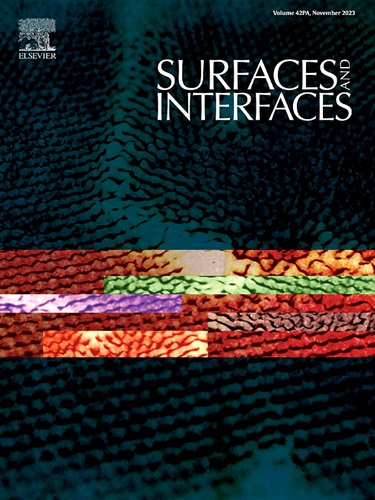Boosting lubricity and wear resistance via graphene oxide and graphene oxide-boron nitride composite systems
IF 5.7
2区 材料科学
Q2 CHEMISTRY, PHYSICAL
引用次数: 0
Abstract
Precise control of sliding interfaces is crucial to minimize friction and wear. For this purpose, two-dimensional (2D) materials have shown promising results which have sparked further interest in studying and engineering this material class for better tribological control. In this study, we explored the friction and wear characteristics of solution-processed monolithic flake coatings of hexagonal boron nitride (BN) and multilayer graphene oxide (mGO) at various concentrations. We chose BN and mGO as solid lubricants from the class of 2D materials due to their low shear strengths, which arise from their lamellar crystalline structures. Furthermore, the chemical and thermal stability of BN offers enhanced resistance to oxidative degradation. Additionally, we developed a highly lubricating and wear-resistant composite flake coating comprising BN and mGO (designated as BN_mGO), whose tribological effectiveness exceeds their individual counterparts. The friction and wear control efficacy of the BN_mGO composite flakes coating surpassed that of the monolithic BN flakes coatings and was found to be similar to or slightly better than the monolithic mGO flakes coatings fabricated at much higher solution concentrations. The BN_mGO composite achieved exceptional tribological performance with the lowest average coefficient of friction (∼0.28), suggesting ∼61.4 % reduction compared to bare stainless steel (SS). Raman and Fourier transform infrared spectroscopies, electron microscopy, and elemental mapping analyses of the wear track along with transmission electron microscopy analysis of the composite flakes coating were performed to elucidate the tribological mechanisms. There was evidence of the reduction of mGO to reduced mGO (rmGO) during the formation of the BN_mGO composite, which contributed to its enhanced lubricity and wear resistance. This phenomenon could potentially be leveraged in the development of other mGO-based binary or ternary composite coating systems to improve sliding contact performance and wear protection.

求助全文
约1分钟内获得全文
求助全文
来源期刊

Surfaces and Interfaces
Chemistry-General Chemistry
CiteScore
8.50
自引率
6.50%
发文量
753
审稿时长
35 days
期刊介绍:
The aim of the journal is to provide a respectful outlet for ''sound science'' papers in all research areas on surfaces and interfaces. We define sound science papers as papers that describe new and well-executed research, but that do not necessarily provide brand new insights or are merely a description of research results.
Surfaces and Interfaces publishes research papers in all fields of surface science which may not always find the right home on first submission to our Elsevier sister journals (Applied Surface, Surface and Coatings Technology, Thin Solid Films)
 求助内容:
求助内容: 应助结果提醒方式:
应助结果提醒方式:


